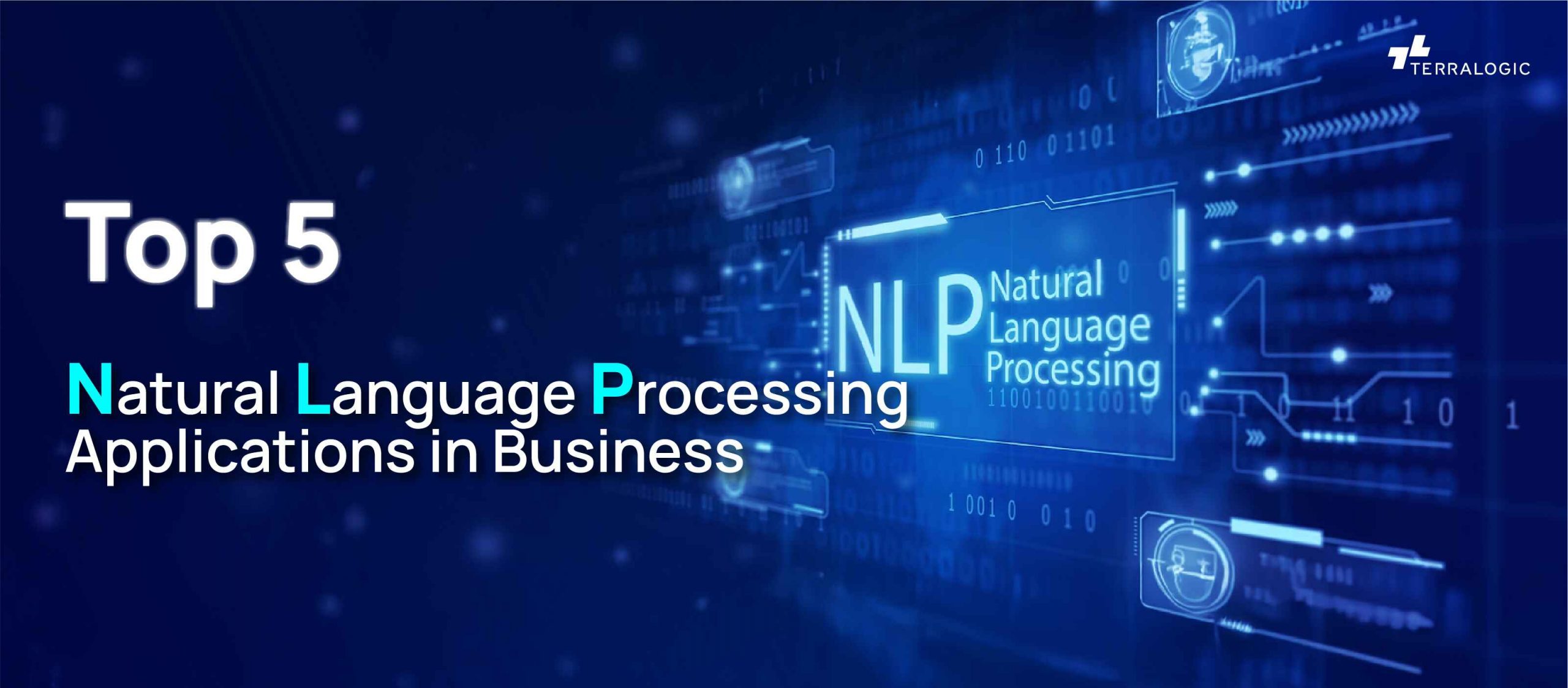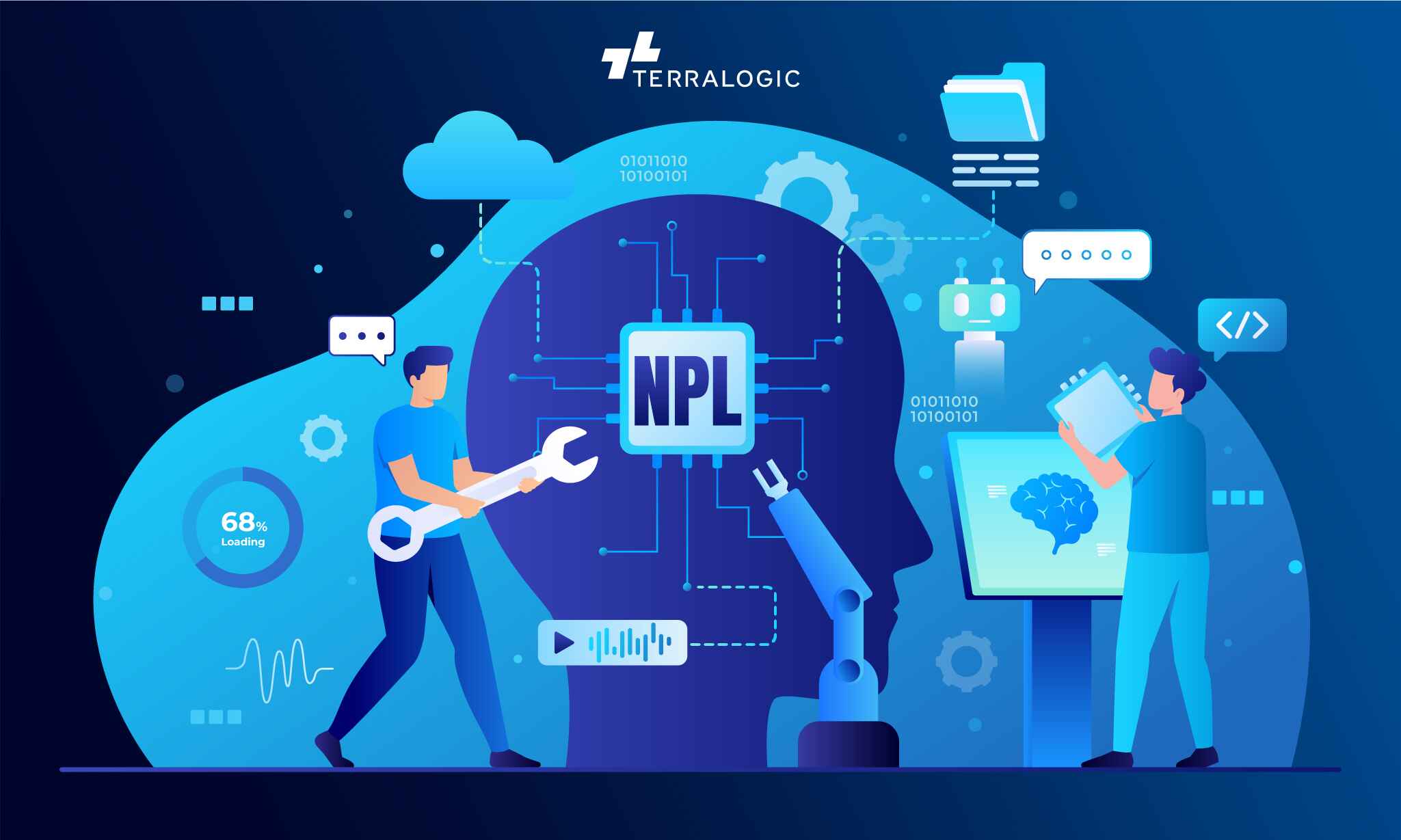Top 5 Natural Language Processing Applications in Business
February 14, 2025

“The rise of chatbots and virtual assistants has revolutionized customer service, with consumers now expecting instant and personalized responses. This trend is particularly prevalent in the natural language processing market within the artificial intelligence market, as companies leverage NLP technology to enhance customer interactions.” – Statista.
Natural Processing Language needs no introduction nowadays. This subfield of AI is transforming all sorts and sizes of businesses by enabling computers to understand human language and interact accordingly.
Recent research has clearly shown that 77% of businesses are using NLP and are expected to increase their investment. Moreover, the largest percentage of companies use multiple solutions based on NLP models from the cloud, open sources, platforms, NLP chatbots, and points for full effectiveness. A hybrid AI platform is used as a flexible solution required in most projects, and that has motivated 52% of the respondents to use either a combination of machine learning with symbolic or rules-based methodologies and 79% to use machine learning technology and either deep learning or knowledge graph. It is visible that technology is changing every business, from NLP in healthcare to NLP in customer support. Every sector is upgrading.
In this article, we will learn about the top five NLP applications that not only revolutionize but have empowered business practices.

What is Natural Language Processing?
Before diving deep into the technological and application aspects, let’s explore what is NLP and why there is much buzz around it.
Another domain of AI comprises NLP, an area of AI that teaches computers to comprehend and decipher human language. It helps in bridging the gap between human communication modes and the understanding of that by a machine, whereby it can process large amounts of natural language data.
Therefore, NLP techniques play roles in various applications, from performing sentiment analysis to doing text-based translation, chatbot service, and summarization that require the extraction of meaningful insights and automation tasks and processes in business operations. These NLP applications are now adapted everywhere, and sectors are mapping progress.
Top 5 Business Applications of NLP That You Need to Know
Now, let’s explore the top five natural language processing business applications
that may change the game in transforming data analysis, customer interactions, and decision-making for efficient growth and cutting through competition in the market.
Sentiment Analysis
- The sentiment analysis tool interprets emotions in text, categorizing them as “positive,” “negative,” or “neutral,” and can identify specific emotions like “anger” or “joy.”
- It gives the firms the opinion or sentiment of customers toward brands, products, or services from online conversations and feedback.
- TasNetworks ran sentiment analysis on monthly responses to the surveys to detect service-related issues.
- They analyzed the sentiment and themes to understand customer concerns and then deliver service.
Text Classification
- Text classification automatically categorizes documents and units of text into categories, such as ordering company presentations into predefined topics.
- It helps in content discovery, efficient document management, and extracting insights for business use.
- LinkedIn detects inappropriate content, and Facebook identifies hate speech through text classification.
- It is one of the most widely used NLP applications in business. Correct implementation, however, depends on correct data being collected and stored such that accuracy is met.
Text Summarization
- Automatic text summarization: the automatic production of abridged summaries from extended content.
- It is a productive way to update users about the information since it boosts productivity.
- The length of the summary varies from a short paragraph, a single sentence, or just key phrases. Example: the headline of a news story.
- Although mainly studied at the academic level, there are more real-life uses of text summarization.
- It can be of great use for extracting the main information from lengthy texts.
- A thesis for the Ph.D. researched a summary of consumers’ reviews.
- This methodology analyzed thousands of reviews on any product to provide key phrases.
- The summary technique has helped users quickly identify the essentials without reading individual reviews.
Chatbots and Virtual Assistants
- Chatbots and virtual assistants used to upgrade customer service
- They provide service, answering most of their basic questions and finding solutions to most small issues
- Automated service makes sure that customers are supported all day.
- They personalize an experience by listening to his/her customer queries and likes or dislikes.
- Personalization creates more positive user fulfilment overall.
- NLP Chatbots make it easier to operationalize repetitive interaction
- Automaton allows human agents to address more difficult issues.
- It leads to quicker response time and optimal usage of resources.
- The business itself will then enjoy enhanced operational efficiency and a better customer experience.
Conversational Agents
- They apply business applications of natural language processing to interact either in writing or voice and sometimes in both.
- Two categories are there, that is, virtual assistants and chatbots.
- Virtual assistants or AI assistants operate specific activities through a couple of dialogues or brief conversations; examples are Siri, Alexa, and Google Assistant.
- The capabilities of the agents can arrange appointments, dial numbers, give directions, and more manageable applications of smart devices.
- Businesses utilize AI assistants through websites to address inquiries or simple concerns from clients.
- These represent human-like longer conversations but may not necessarily lead to task completions as earlier set objectives.
- There are many tasks where people themselves never intervene since artificial assistants could sort them on their own, thereby reducing work volume and operation costs linked with it through call centres.
- As an illustration, for this kind of solution, Australia employed Alex, who is its tax authority AI assistant, to respond to the huge amount of incoming calls
- 270,000 dialogues after three months, which translated into 75%, First-Contact-Resolution per cent a factor that improved over time.
- Virtual assistants will work around the clock, thereby providing service all the times that human staff is either unavailable or away.
Conclusion
NLP has revolutionized the way business is done—from improving customer service with chatbots to extracting insights through sentiment analysis. More applications of NLP will continue to bring value to the business world through automation, improved communication, and strategic decision-making. As technology advances, the need for investing in NLP applications will be critical for companies that want to be competitive and meet the ever-growing demands of a data-driven market.
Keep reading about
LEAVE A COMMENT
We really appreciate your interest in our ideas. Feel free to share anything that comes to your mind.
Our 16 years of achievements includes:
10M+
lines of codes
2400+
projects completed
900+
satisfied clients
16+
countries served




